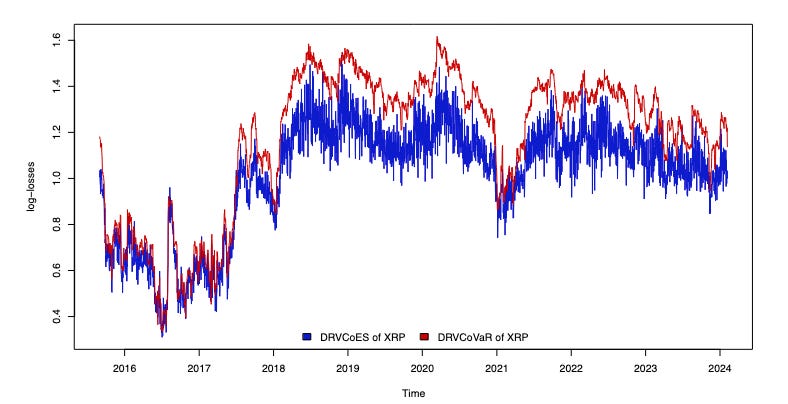Does intelligence nodeling have name for terrible error of system that doesnt work at extremes- today's example hills of city of angels dont have water pressire when winds of fire also make it impossible for planes to dump water - infamous 2008 financial example: insurnce companies had taken out chain of extreme risks that were correlated with each other as well as being actualosed by fake ratings
Sources
Answer
The phenomenon you're describing is often referred to as "tail risk" or "extreme event modeling failure" in intelligence and risk modeling. This concept encompasses the tendency of some systems or models to break down or fail catastrophically under extreme conditions that weren't adequately accounted for in their design.
Tail Risk and Black Swan Events
In risk management and financial modeling, these extreme scenarios are sometimes called "tail events" or "black swan events." They represent rare but high-impact occurrences that fall outside the range of normal expectations and can have severe consequences15
.Examples from Recent Events
2025 Los Angeles Wildfires
The recent wildfires in Los Angeles provide a stark example of this type of system failure:- Water System Breakdown: The city's water infrastructure, designed for normal usage, failed to maintain adequate pressure in hillside areas during extreme fire conditions1622.
- Compounding Factors: High winds grounded firefighting aircraft, eliminating a crucial backup method and further straining the already overwhelmed ground-based water system525.
2008 Financial Crisis and AIG
The 2008 financial crisis, particularly the near-collapse of AIG, offers another prime example:- Correlated Risks: AIG had taken on massive amounts of risk through credit default swaps (CDSs) that were highly correlated with each other and with broader market conditions3031.
- Misrated Securities: Many of these risks were based on securities that had been improperly rated, leading to a severe underestimation of the true risk exposure3132.
- Systemic Impact: When the housing market collapsed, it triggered a chain reaction that threatened not just AIG but the entire financial system, revealing the hidden interconnectedness of these risks3334.
Modeling Challenges
These examples highlight several key challenges in modeling extreme events:- Underestimation of Tail Risks: Traditional models often underestimate the likelihood and impact of extreme events1538.
- Correlation in Extreme Conditions: Many systems that appear independent under normal conditions can become highly correlated during crises3032.
- Cascading Failures: The failure of one system can trigger a chain reaction, leading to widespread collapse1126.
- Data Limitations: Historical data often lacks sufficient examples of extreme events, making it difficult to model them accurately836.
Addressing the Challenge
To better prepare for these extreme scenarios, researchers and policymakers are exploring several approaches:- Stress Testing: Subjecting systems to simulated extreme conditions to identify vulnerabilities1723.
- AI and Machine Learning: Using advanced algorithms to identify complex patterns and potential failure modes that might be missed by traditional models836.
- Interdisciplinary Approaches: Combining insights from multiple fields to better understand and model complex, interconnected systems2038.
- Improved Risk Communication: Ensuring that the limitations and uncertainties of models are clearly communicated to decision-makers38.
Is there a term for lack of transparency where a market's tail risks are not opne intelligence mapped. Adftr all, someone profits from others losses - and it seems that with tail risks. losers are those who were most separated from deep data chains while gainers were some of those at top of such data. A general context for asking is nuclear energy. Whilst theoretcally this could be an energy solution i would not chose to brimg up a family near nuclear plant beciase over time humans fail to attend 24/7 or fail to keep the peace. Can autonomous montoring bring safety to where human attention has history of failing and future secarion proofchecking e some
Sources
Answer
There isn't a single widely-used term that precisely captures the lack of transparency around unmapped tail risks in markets, especially in the context of nuclear energy. However, several concepts relate to this issue:
Information Asymmetry and Tail Risk Opacity
The scenario you describe, where those with access to deep data chains profit from tail risks while others suffer losses, is a form of information asymmetry. In the context of tail risks, we might call this "tail risk opacity" or "extreme event information asymmetry."This opacity can lead to:- Mispricing of risk in markets
- Concentration of losses among less-informed participants
- Potential for exploitation by those with superior information
Nuclear Energy Safety and Autonomous Monitoring
Regarding nuclear energy safety, your concerns about human fallibility in 24/7 monitoring and maintaining peace are valid. The nuclear industry has historically faced challenges related to:- Human error
- Complacency over time
- Geopolitical instability
- Continuous, tireless monitoring
- Rapid detection of anomalies
- Objective data collection and analysis
- Cybersecurity risks
- Need for human oversight and decision-making
- Potential for new types of errors or biases
Emerging Trends in Nuclear Safety
Recent developments in nuclear plant safety monitoring include:- Advanced remote monitoring technologies
- AI-powered predictive maintenance
- Drone-assisted inspections
Conclusion
While autonomous monitoring can significantly improve nuclear safety, it's not a complete solution to the complex challenges of nuclear energy. Transparency around tail risks and equitable access to critical safety information remain important considerations for policymakers and the public.The term "tail risk opacity" could be used to describe the lack of transparency around extreme event risks, though it's not a widely established term. As for nuclear safety, autonomous systems offer promising advancements but must be implemented thoughtfully alongside robust human oversight and comprehensive risk management strategies.Related
How can transparency in AI models be improved to avoid hidden risks
What are the main challenges in achieving transparency in complex AI systems
How does duration drift impact the stability of fixed-income markets
What role do hedge funds play in exacerbating hidden risks in financial markets
How can autonomous monitoring enhance safety in high-risk industries like nuclear energy



No comments:
Post a Comment